Parameters¶
The parameter names of the physical model are rather abstract Greek letters. These are directly taken from the original publication [GG08]. Here, we give some examples and hints of what the parameters mean.
However, all of them influence the shape of the snowflake in some complex way. So, often it’s easiest to start with one of the given Presets that looks like a good starting point for the desired look. Then, it’s often good to just vary one parameter at a time (manually or random) to get a good-looking snowflake.
Examples of Parameters’ Influence on the Shape¶
Here, you see some examples with varying parameters, just to get an idea of how the parameter values can change the appearance of a snowflake. Fig. 45 shows the effect of varying ρ, Fig. 46 shows the effect of varying β, Fig. 47 shows the effect of varying κ and Fig. 48 shows the effect of varying μ.
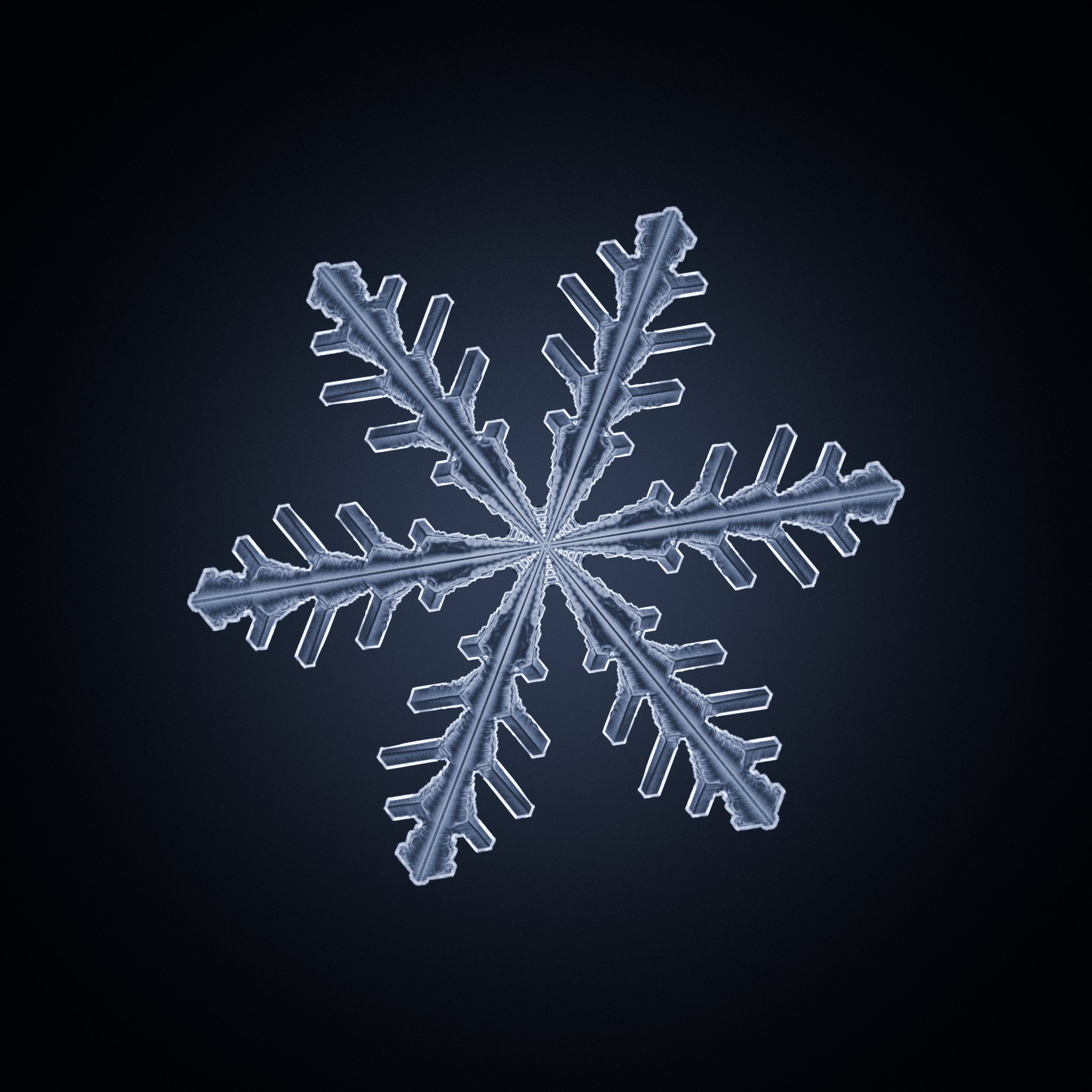 ρ = 0.4
ρ = 0.4
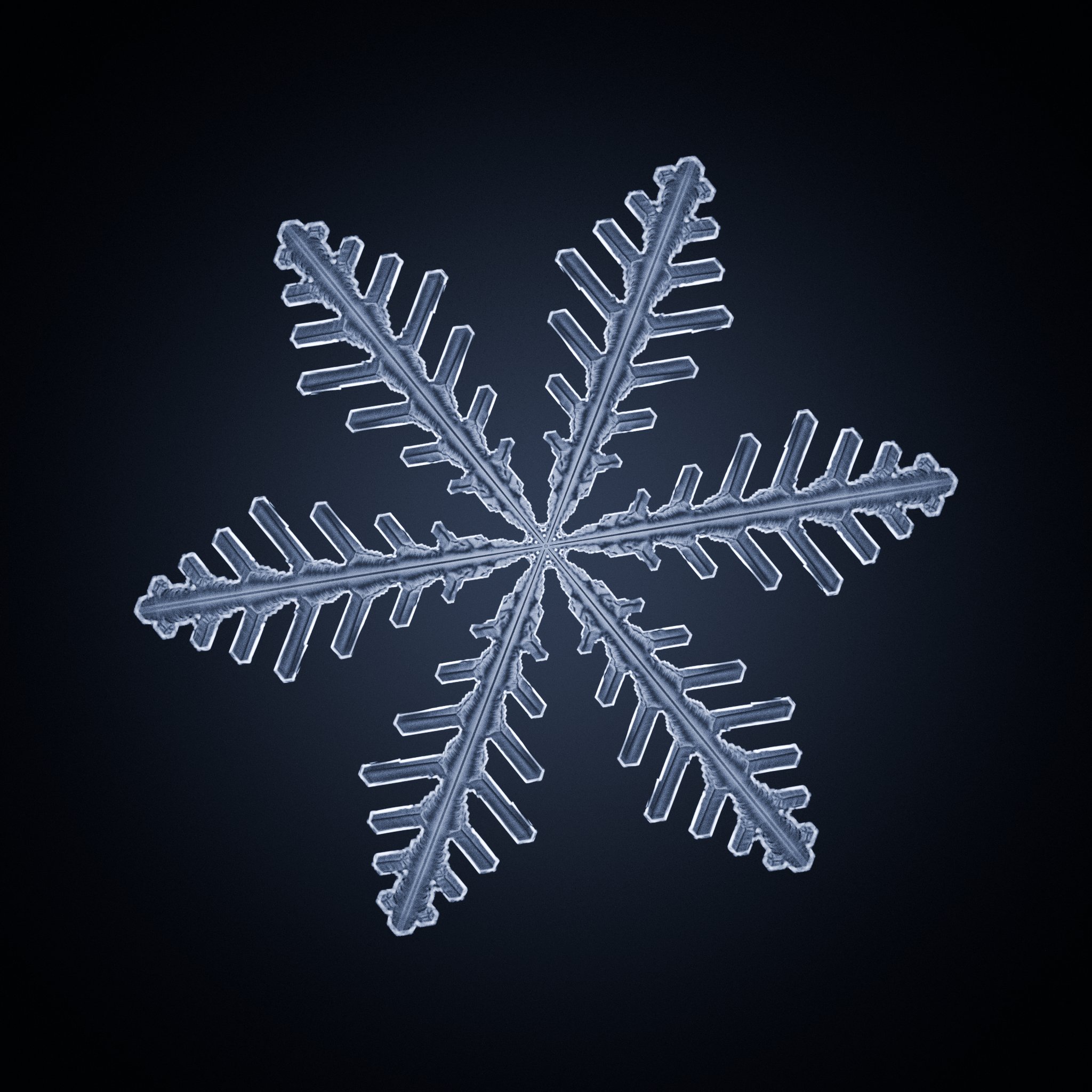 ρ = 0.41
ρ = 0.41
 ρ = 0.42
ρ = 0.42
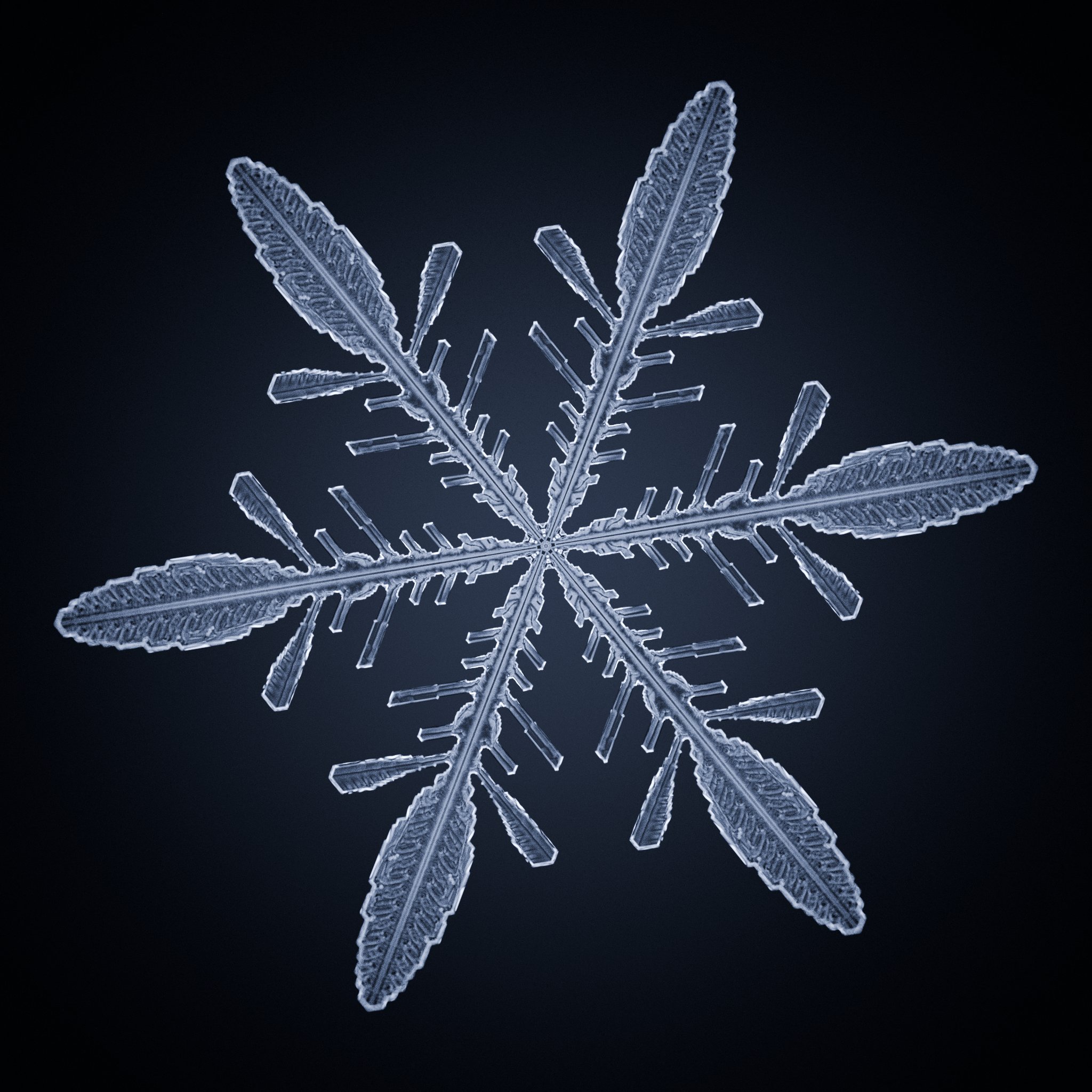 ρ = 0.44
ρ = 0.44
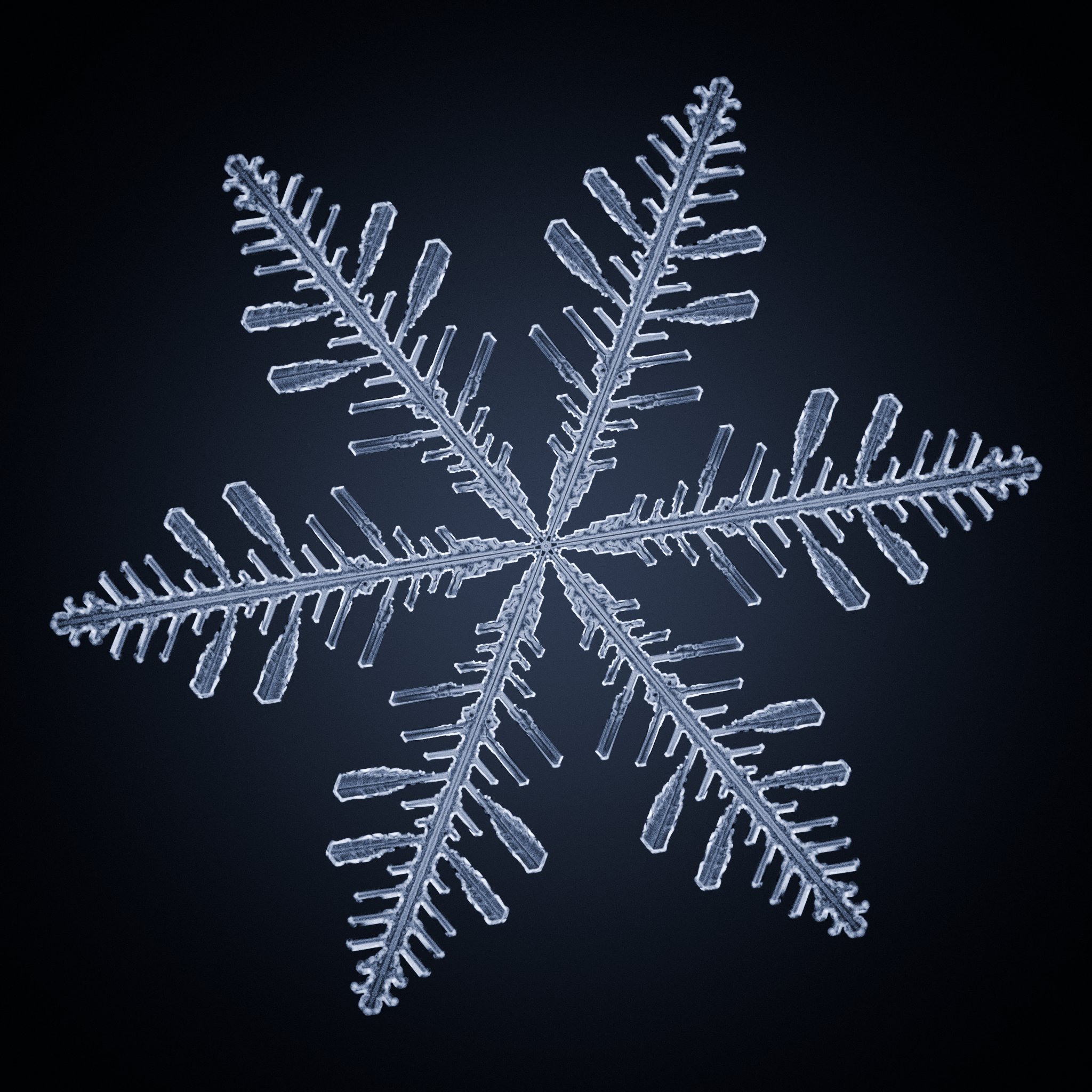 ρ = 0.46
ρ = 0.46
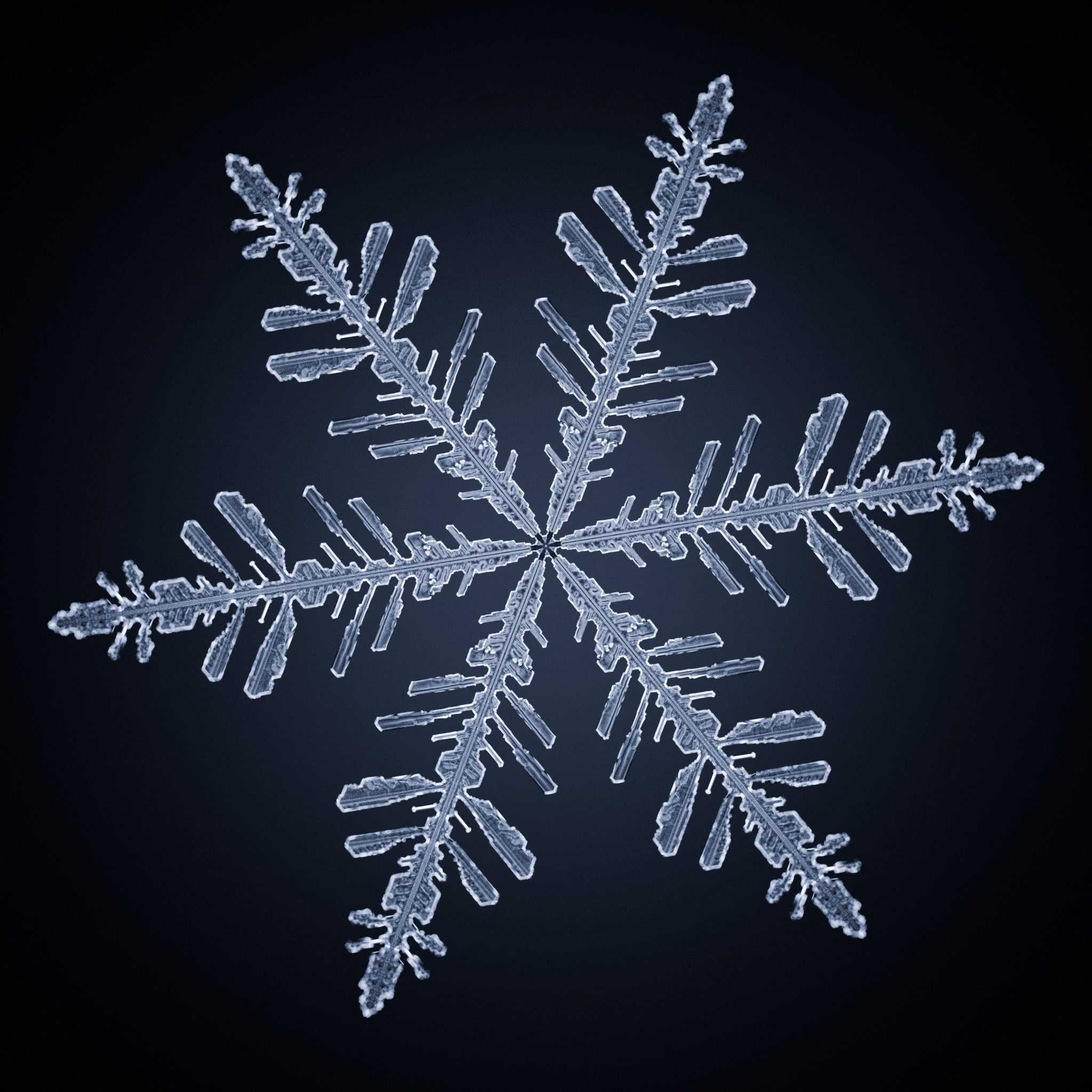 ρ = 0.5
ρ = 0.5
Fig. 45 Effect of varying parameter ρ. These are available as presets Paper Fig 9x [1].¶
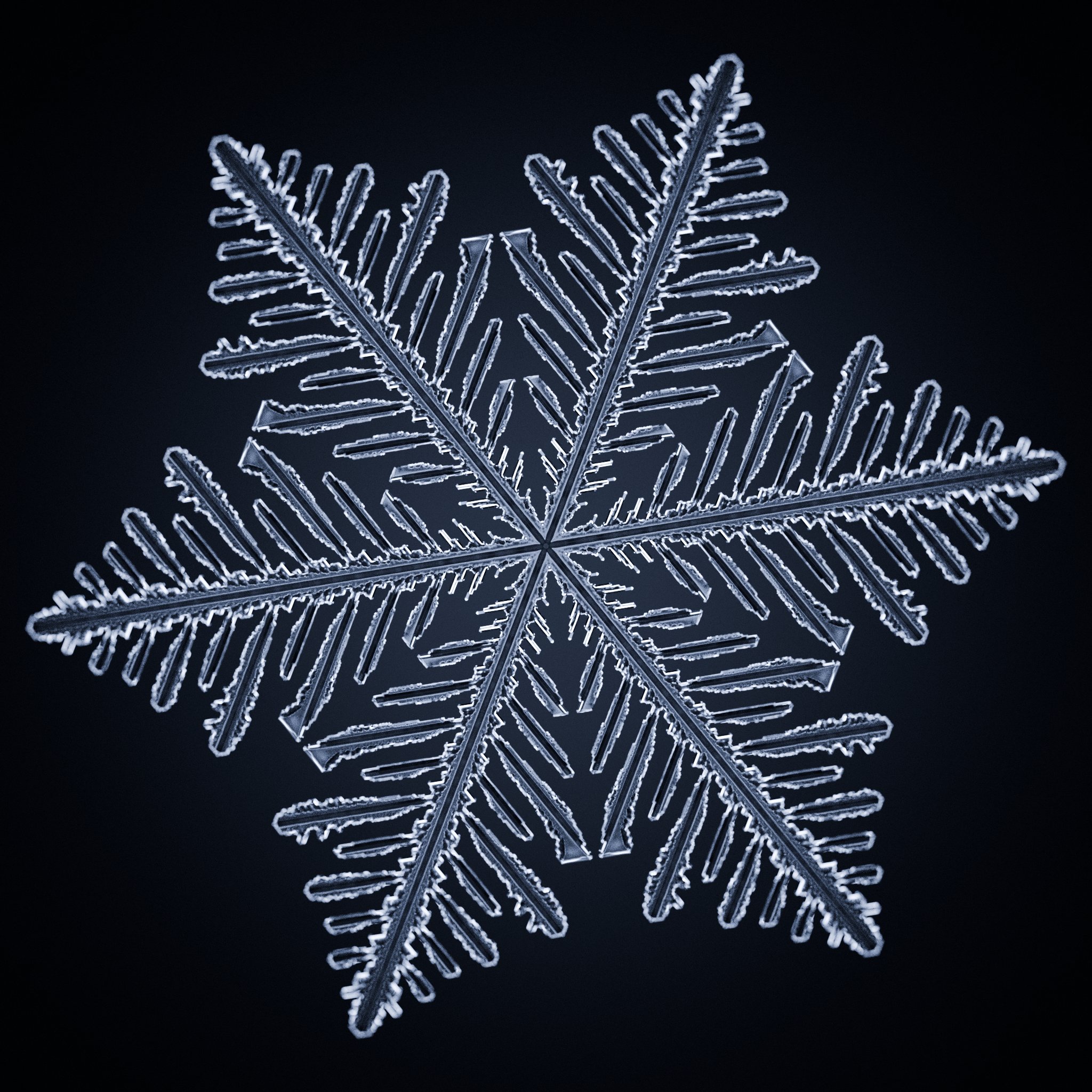 β = 1.9
β = 1.9
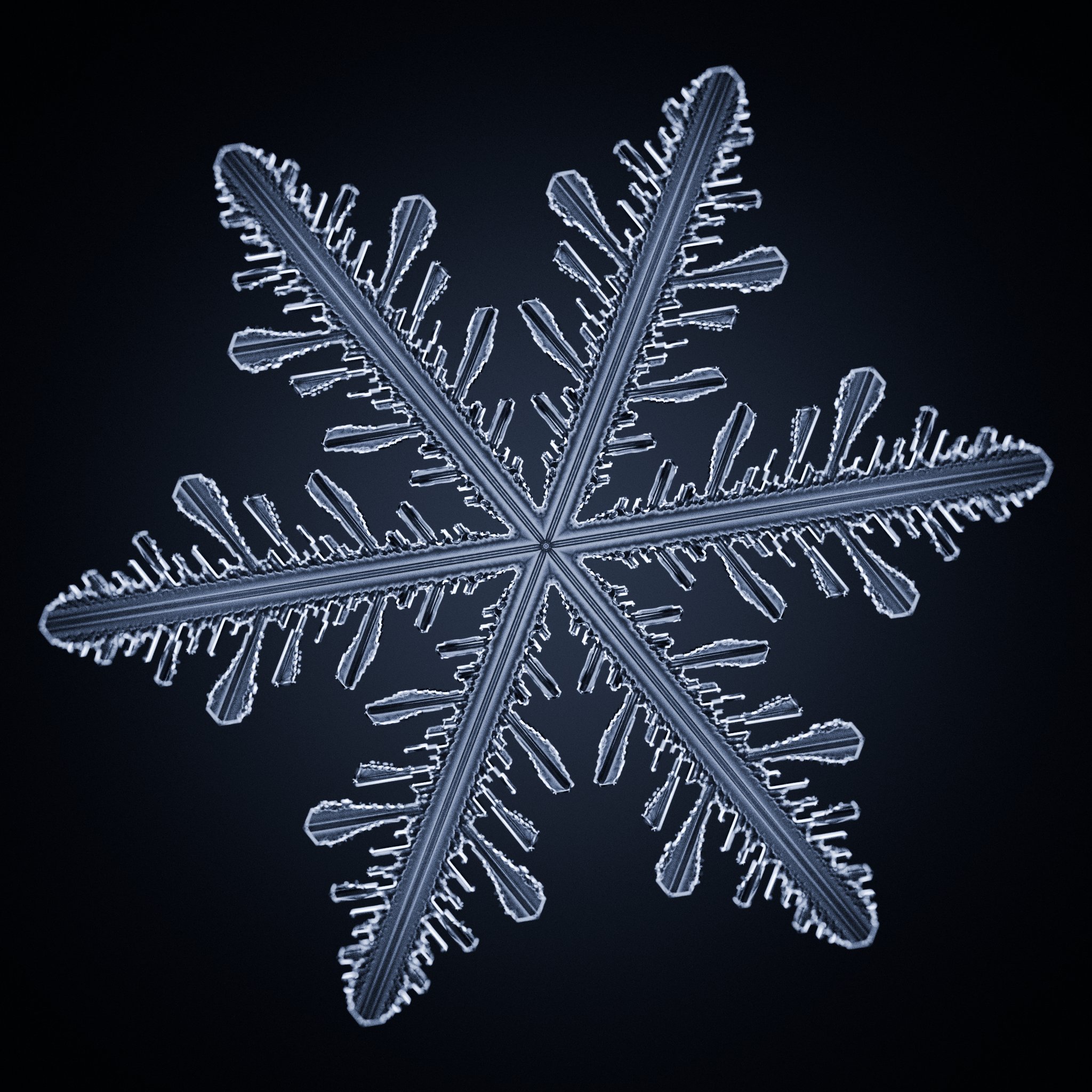 β = 2.2
β = 2.2
 β = 2.4
β = 2.4
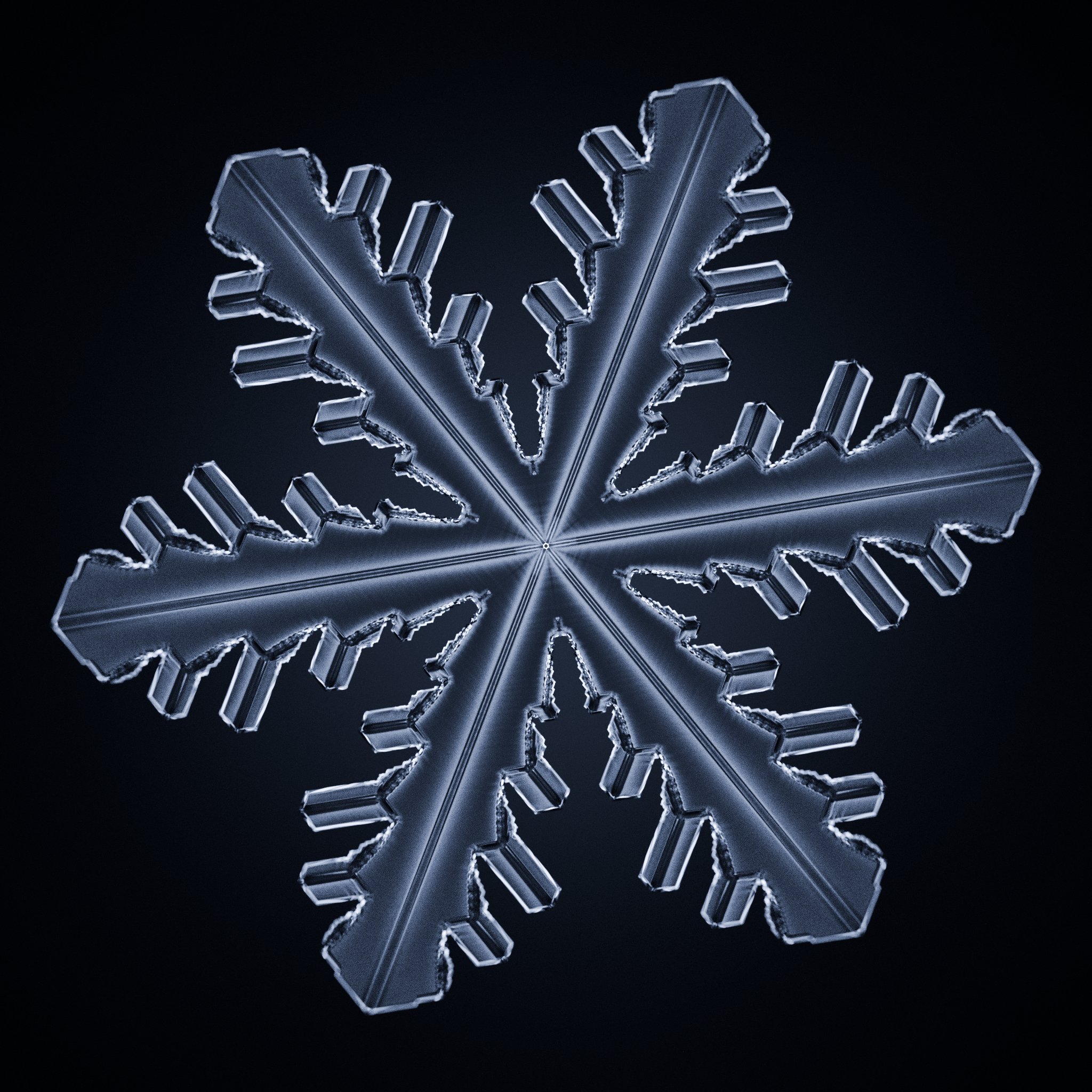 β = 2.6
β = 2.6
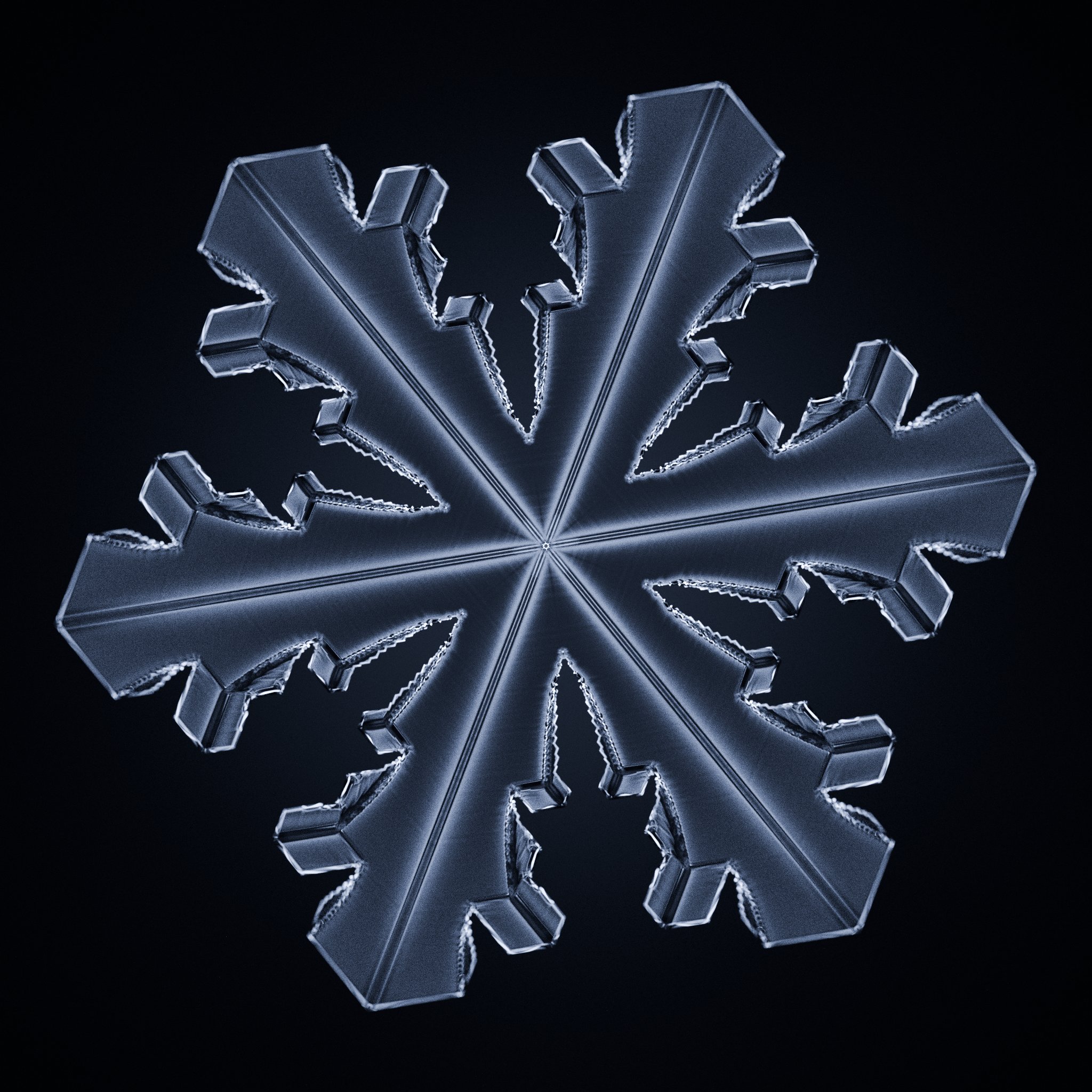 β = 2.7
β = 2.7
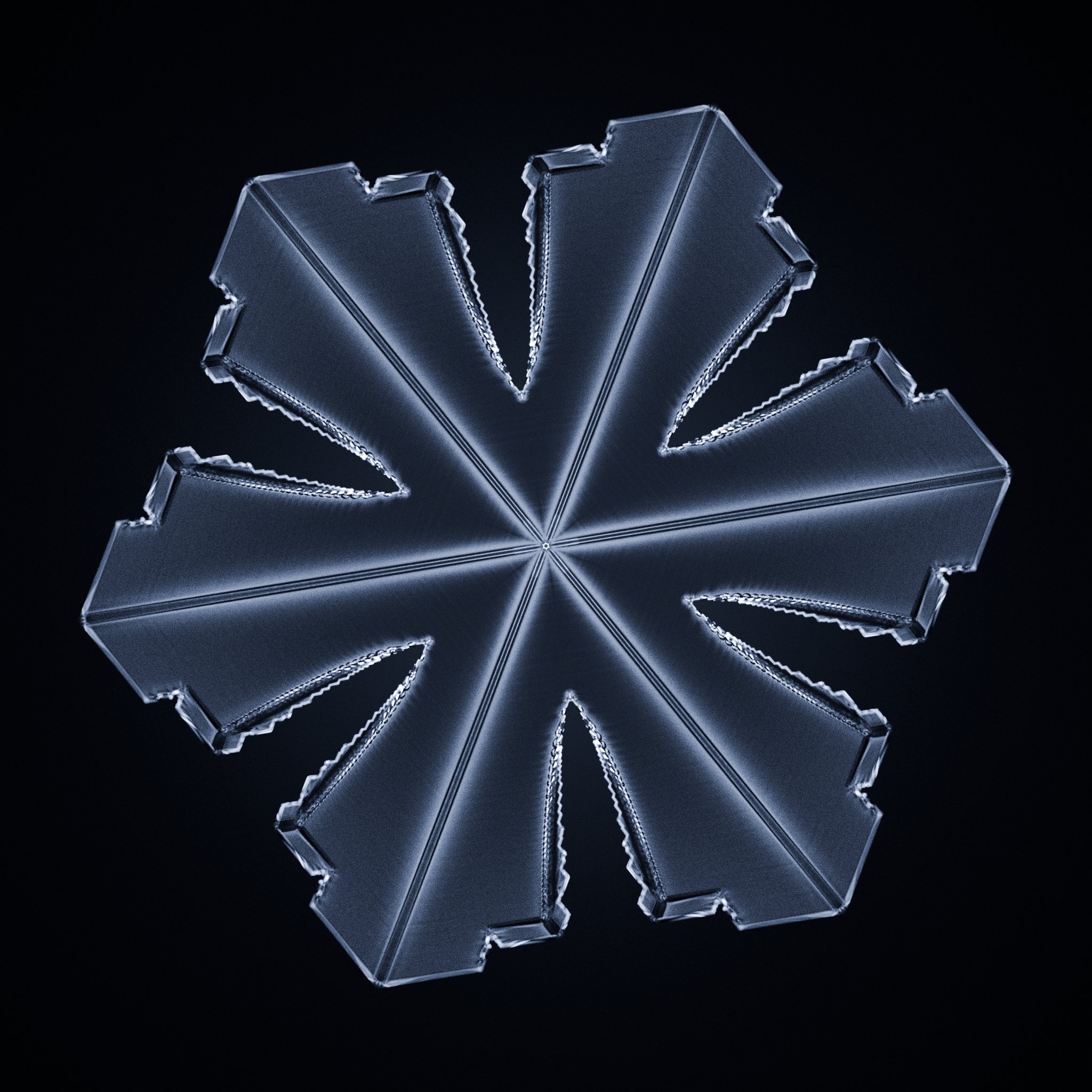 β = 2.8
β = 2.8
Fig. 46 Effect of varying parameter β. These are available as presets Paper Fig 10x [1].¶
 κ = 0.001
κ = 0.001
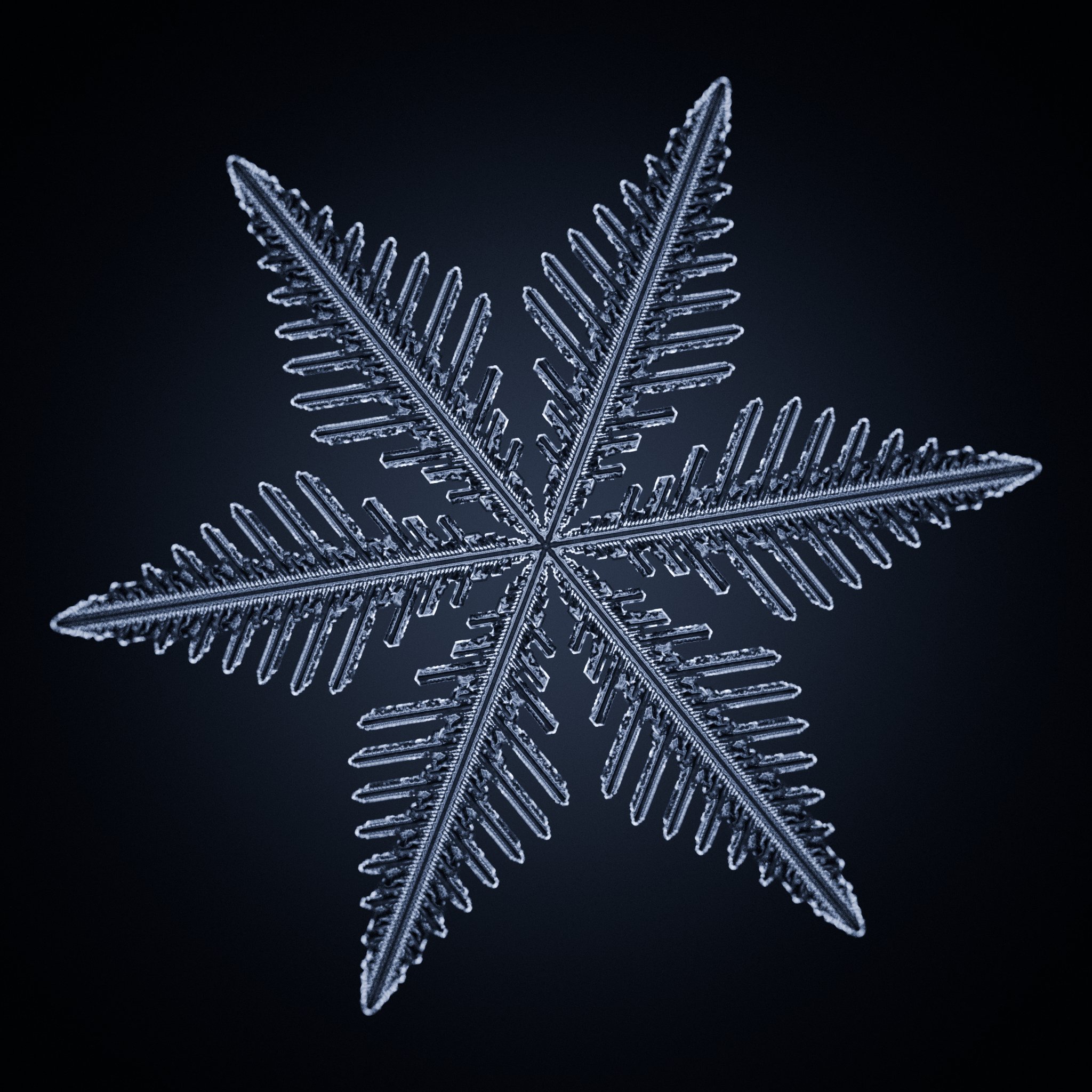 κ = 0.0025
κ = 0.0025
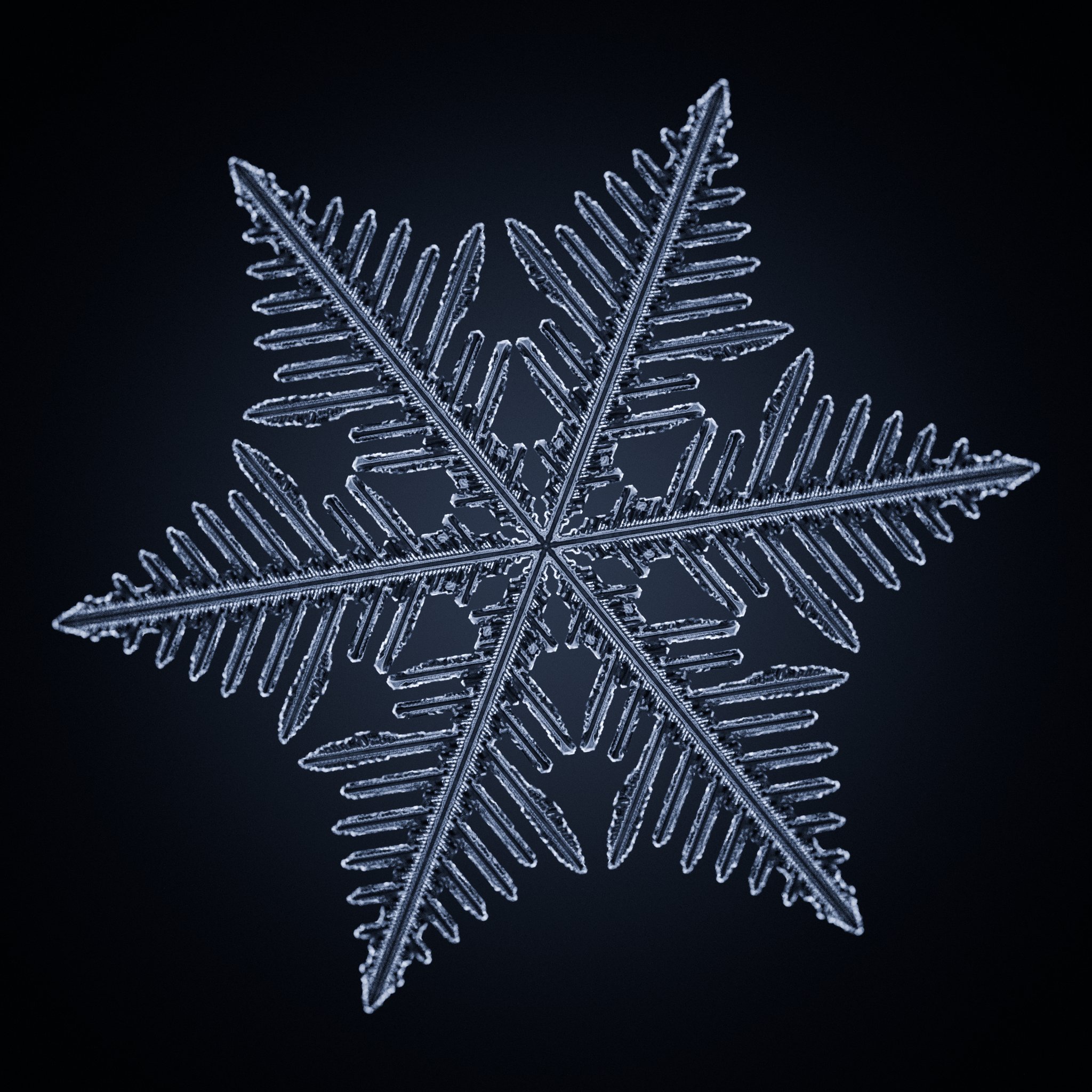 κ = 0.005
κ = 0.005
 κ = 0.0075
κ = 0.0075
 κ = 0.01
κ = 0.01
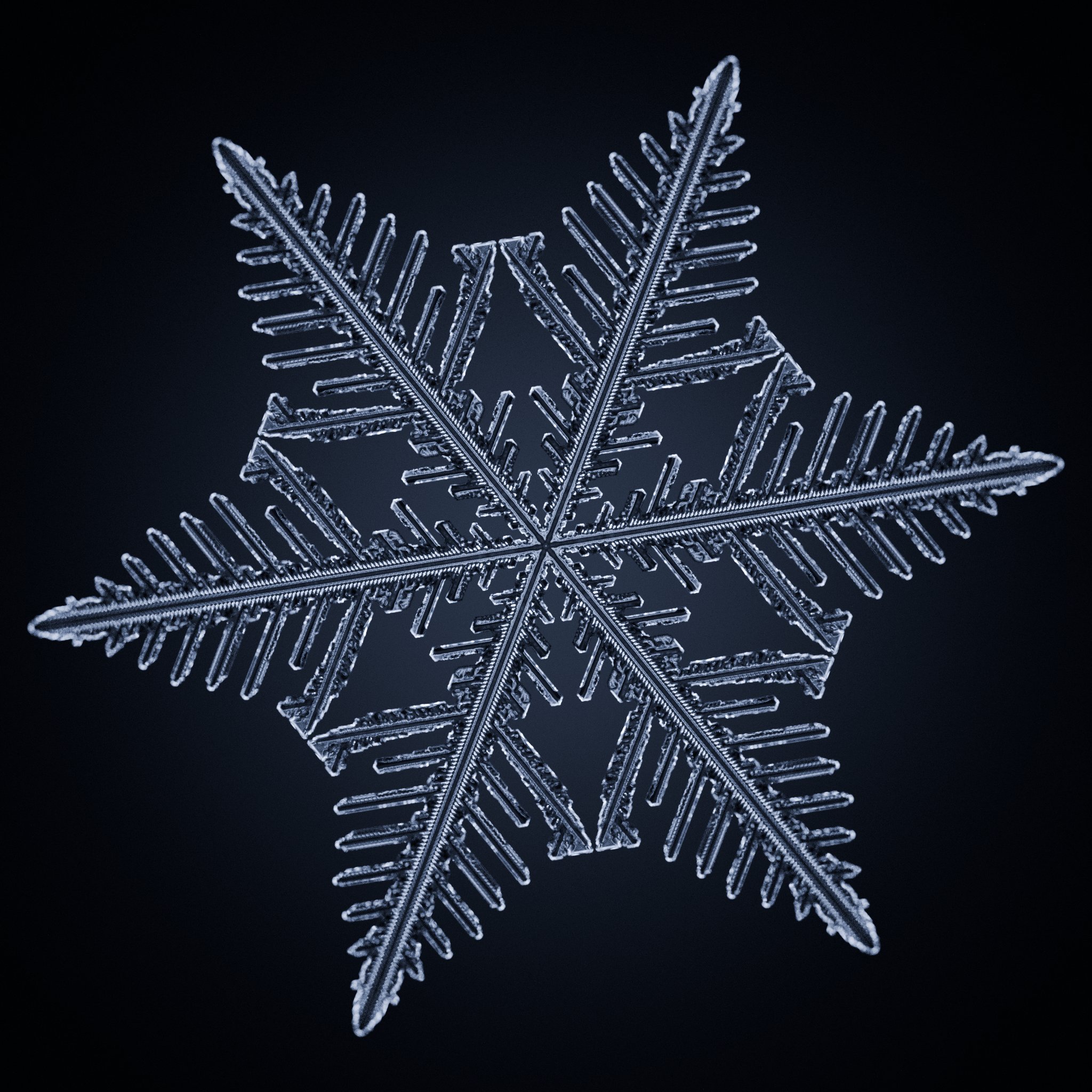 κ = 0.02
κ = 0.02
Fig. 47 Effect of varying parameter κ. These are available as presets Paper Fig 11x [1].¶
 μ = 0.04
μ = 0.04
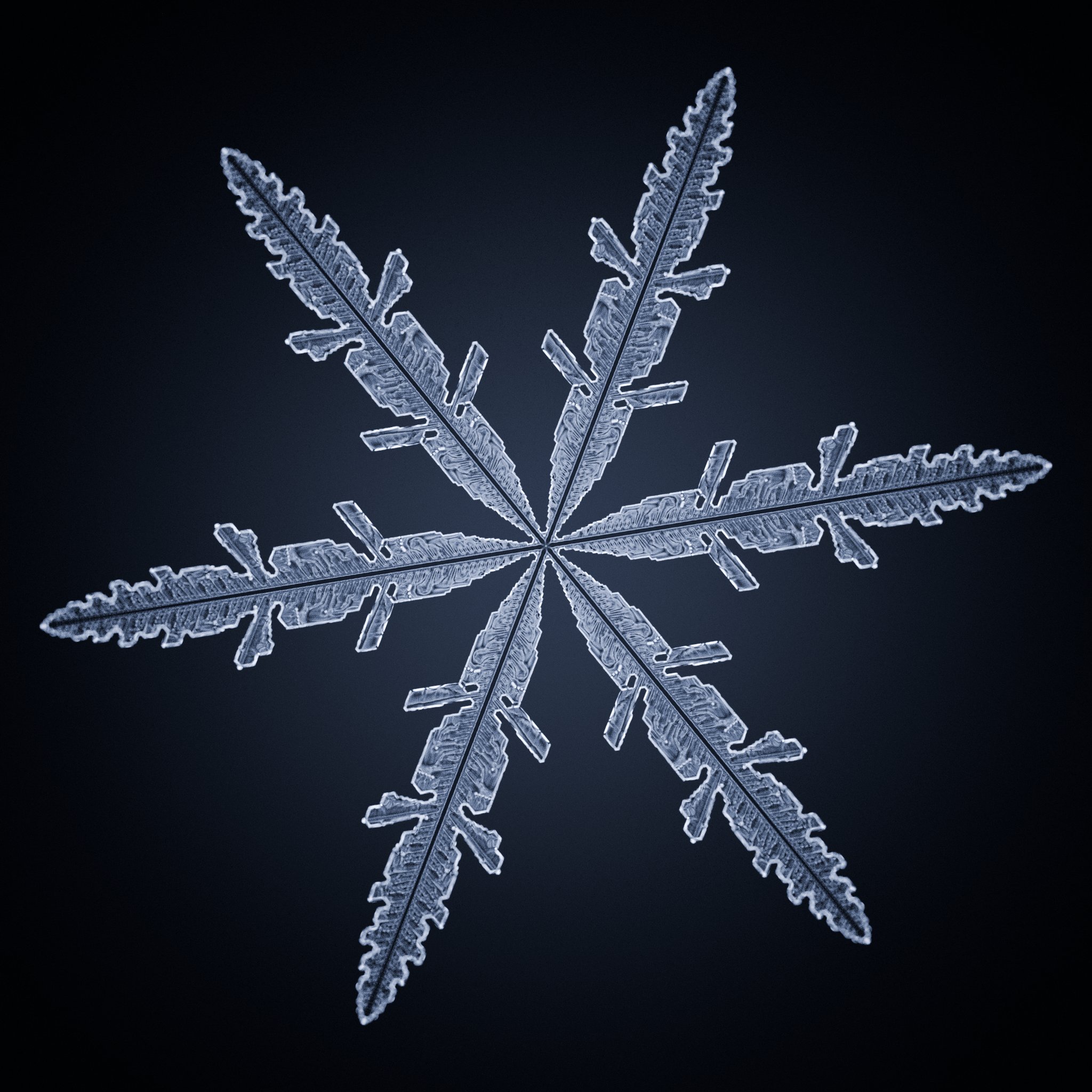 μ = 0.05
μ = 0.05
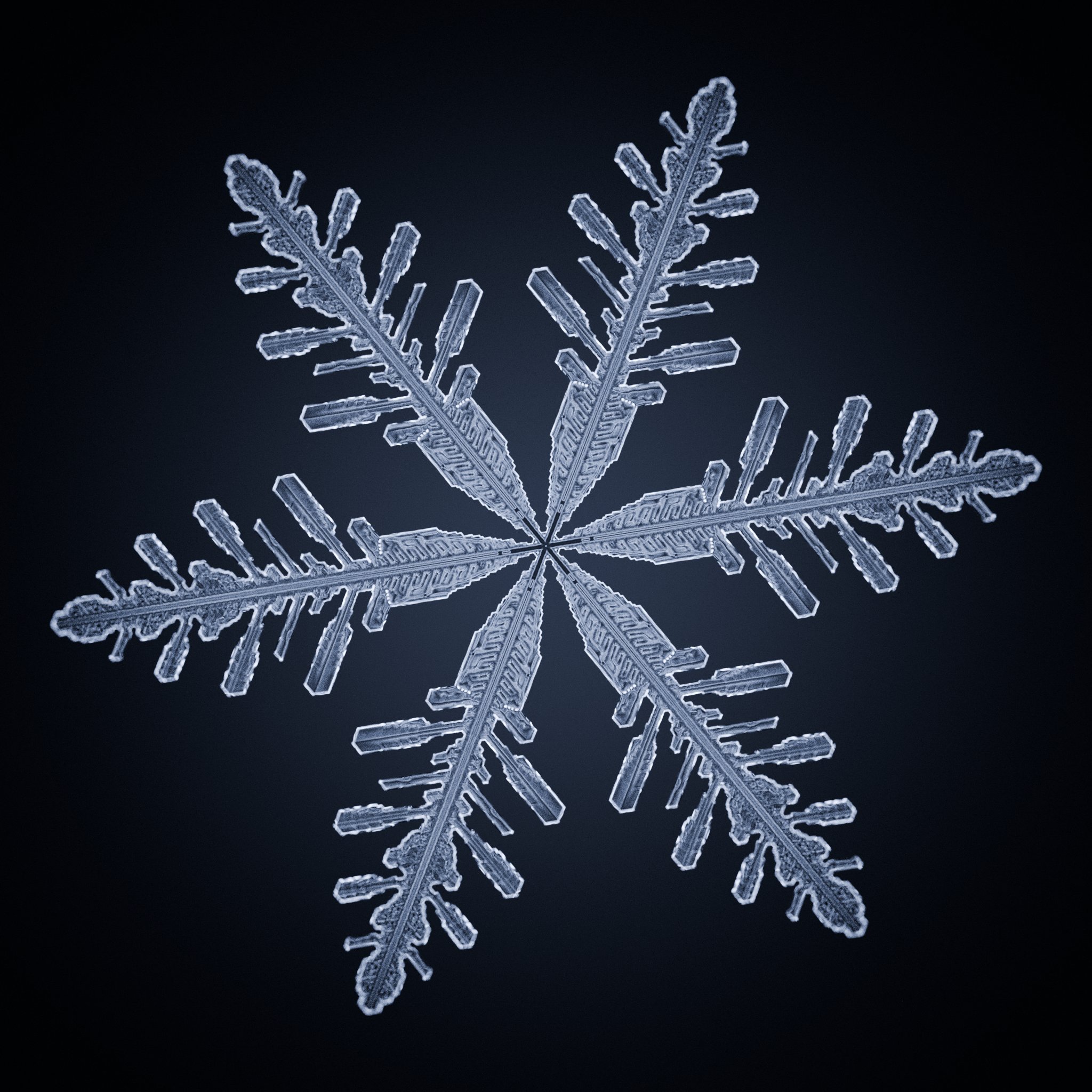 μ = 0.06
μ = 0.06
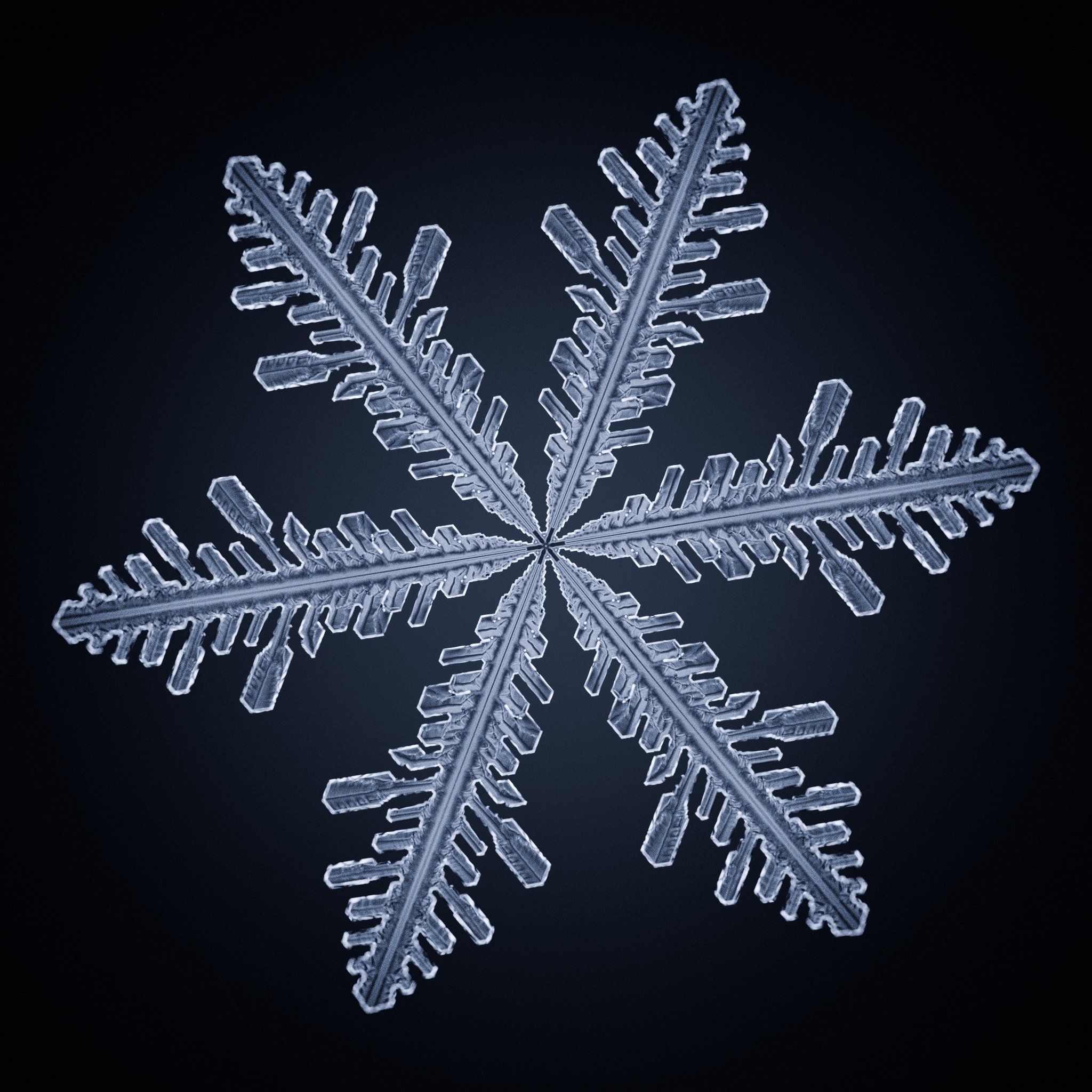 μ = 0.07
μ = 0.07
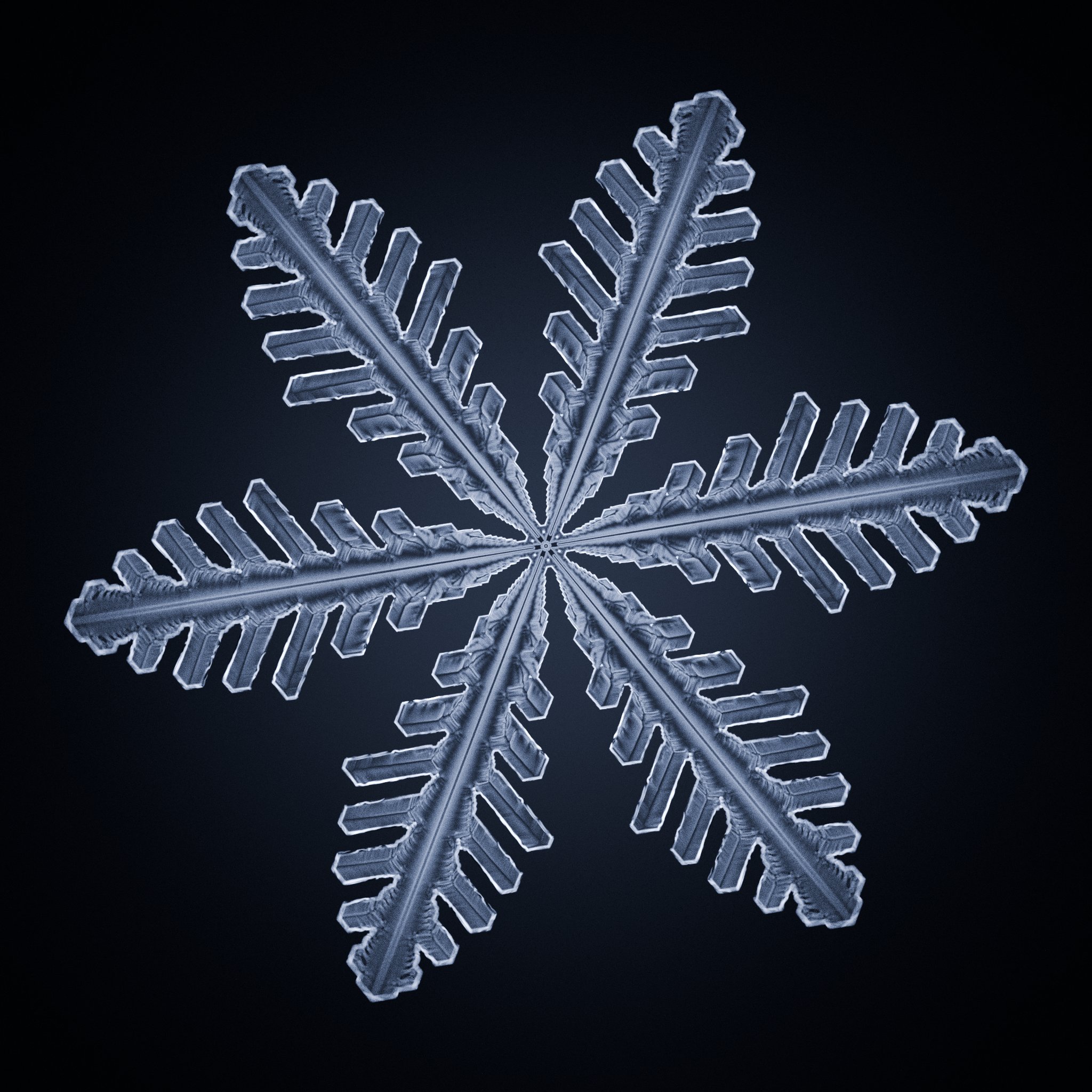 μ = 0.08
μ = 0.08
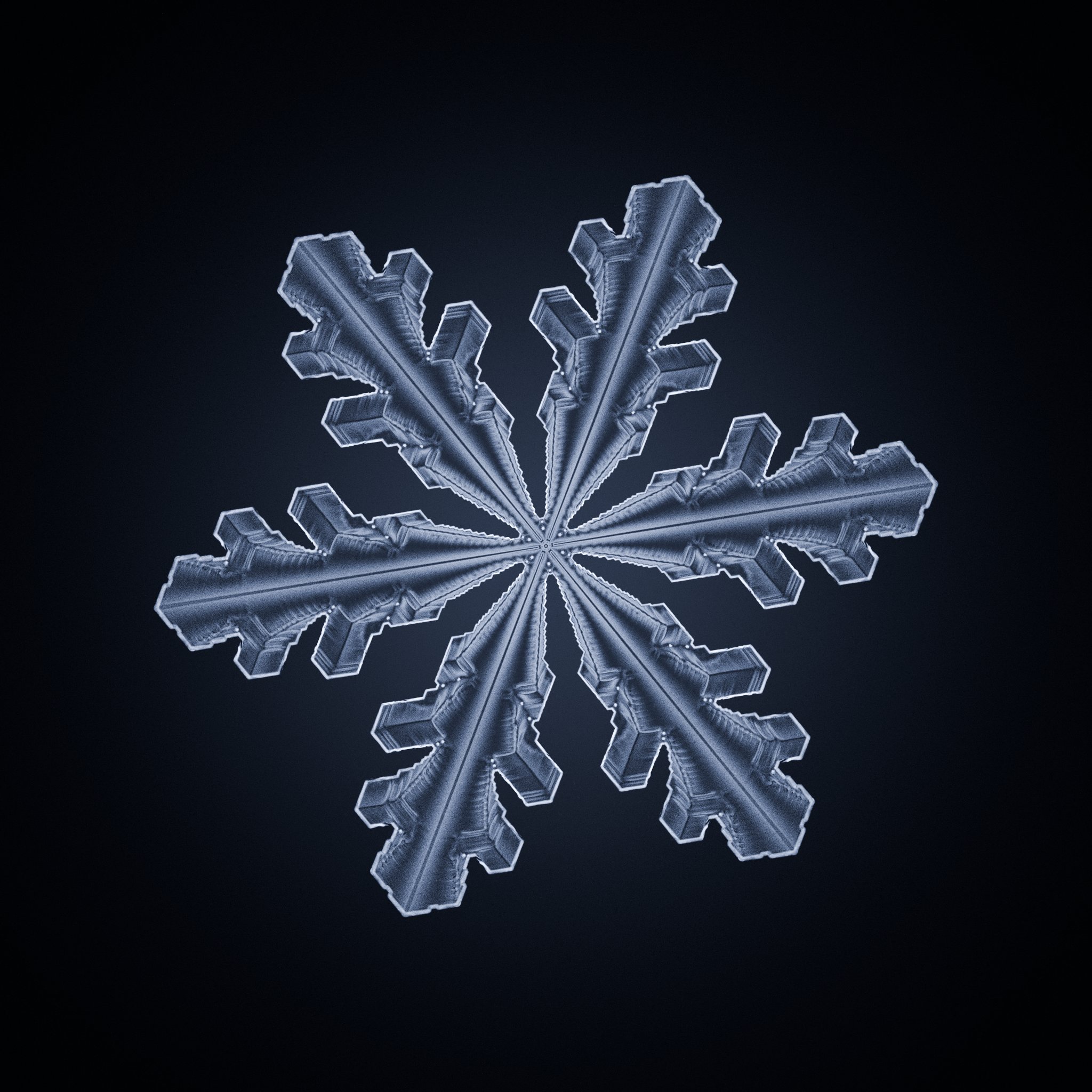 μ = 0.09
μ = 0.09
Fig. 48 Effect of varying parameter μ. These are available as presets Paper Fig 12x [1].¶
Physical Model Details¶
Note
The knowledge presented here is quite technical and not required to generate beautiful snowflakes. So, feel free to skip it, if you don’t care about the mathematical details!
For a full description of the physical snowflake growth model, consider reading the paper by Gravner and Griffeath [GG08].
The model keeps track of where the snowflake has already crystallized and three additional variables:
The boundary mass, amount of quasi-liquid water at the boundary of the snowflake,
the crystal mass, amount of ice at the boundary and in the snowflake, and
the diffusive mass or vapor mass – amount of water vapor around the snowflake.
A single step of the simulation consists of the following sub-steps:
Diffusion of water mass / vapor in the air around the snowflake.
Freezing of water in the boundary layer of the snowflake. κ controls the amount of freezing, that is transforming vapor into liquid and crystal mass.
Attachment of ice to the existing snow crystal, that is, snowflake growth. α, β and θ influence this step.
Melting is the inverse of freezing, transforming boundary water and crystal mass back into vapor.
Noise optionally introduces some randomness, to break the otherwise perfect symmetry.
Parameter Details¶
The following table describes the effect of the parameters in more detail:
Parameter |
Meaning |
|---|---|
ρ |
Amount of vapor around the snowflake. More vapor means faster growth. Also, lower values lead to plate-like structures, while higher values lead to dendrites. |
β |
Anisotropy of the freezing step. Higher values mean less freezing on tips and thus lead to more straight boundary areas. Thus, lower values typically give finer structures, higher values give plate-like snowflakes. |
α |
Amount of boundary mass required for attachment in ridges. Together with θ, this controls the amount of branching in ridges. |
θ |
Amount of max. nearby vapor allowed for attachment in ridges. Together with α, this controls the amount of branching in ridges. |
κ |
Amount of freezing at the boundary. Higher values typically lead to more branching. |
μ |
Amount of water mass transformed back into vapor. Higher values typically lead to more plate-like structures. |
γ |
Amount of crystal mass transformed back into vapor. Similar effect as μ. |
σ |
Amount of randomness added to the vapor density[2]. |
Δρ |
Relative increase of vapor added in each simulation step[3]. Can simulate the fall of a snowflake through varying atmosphere conditions. |